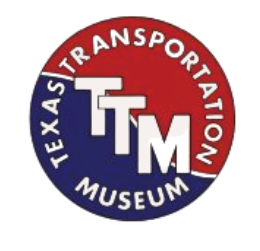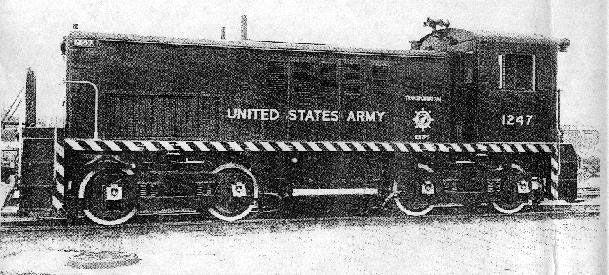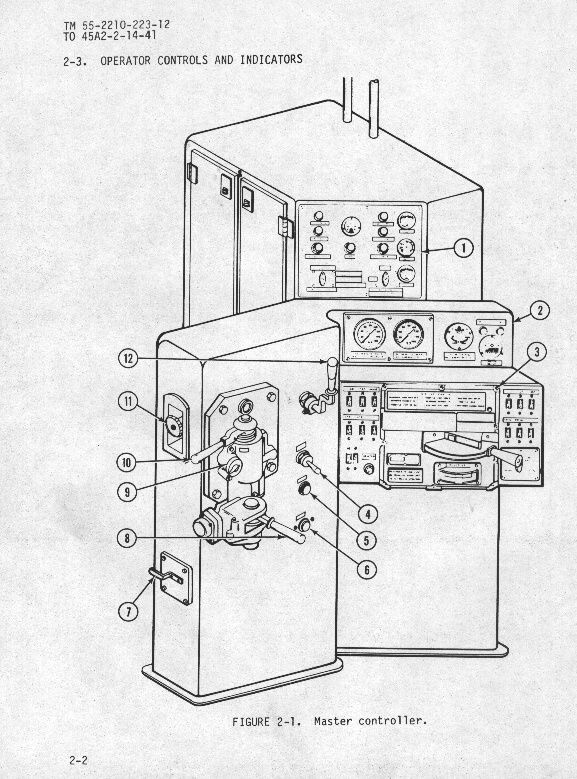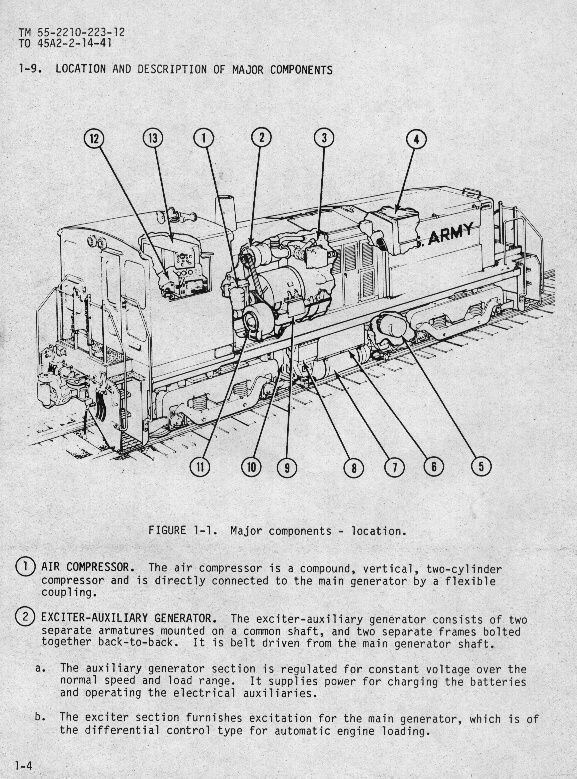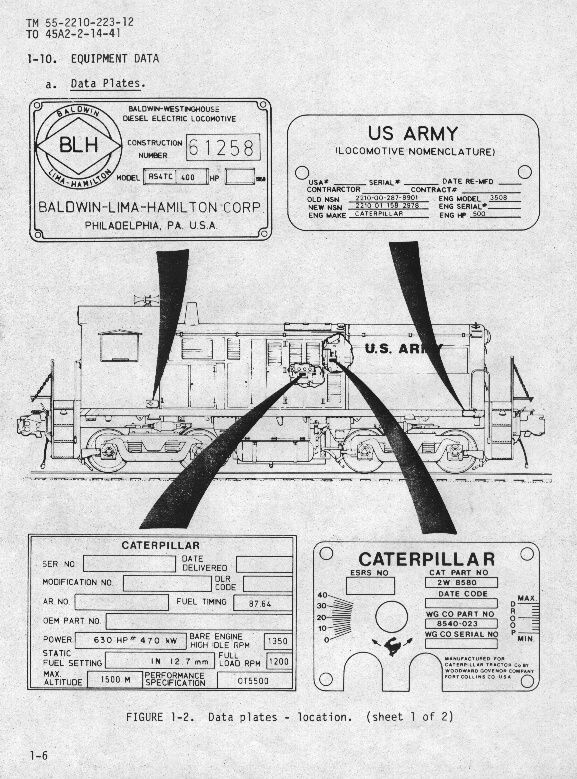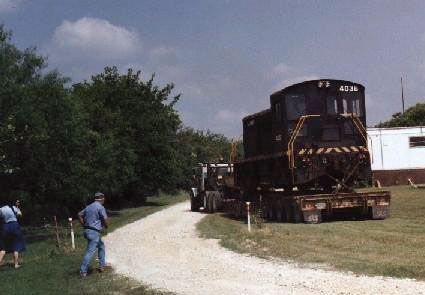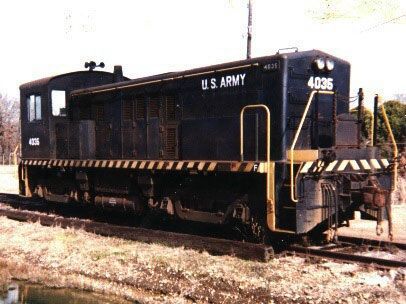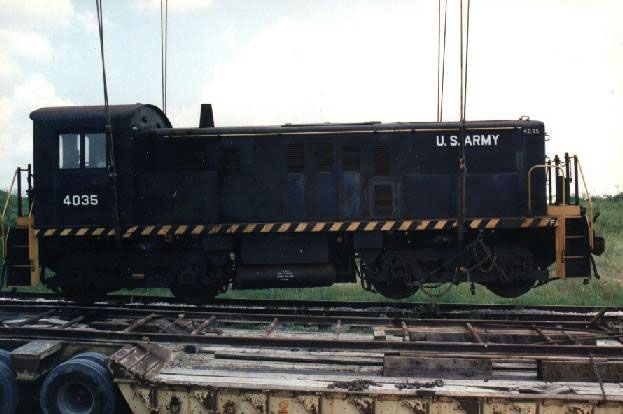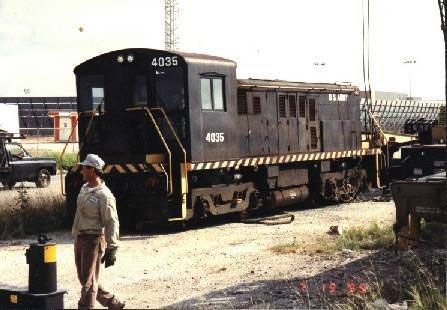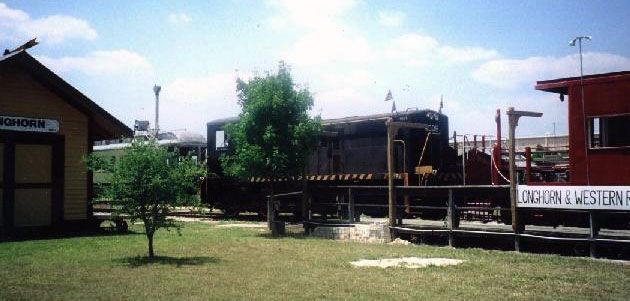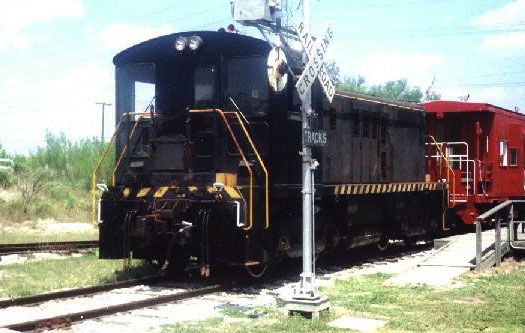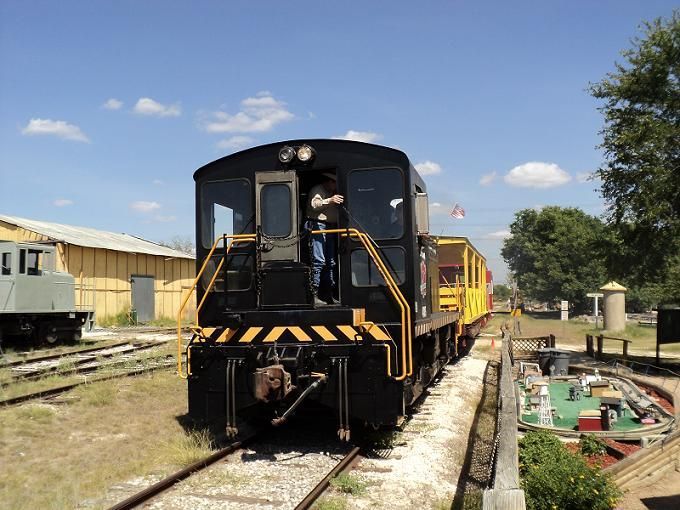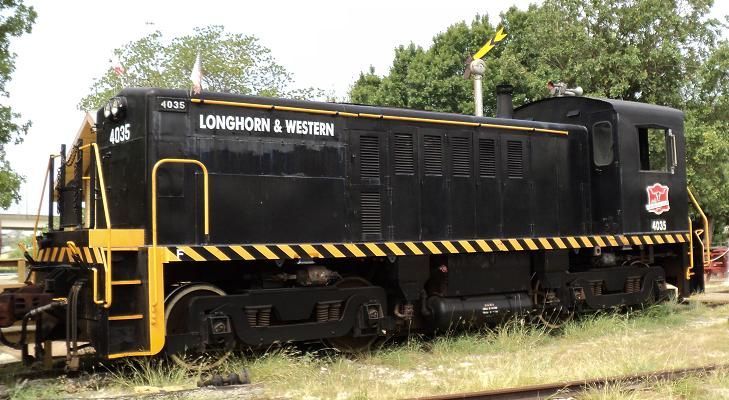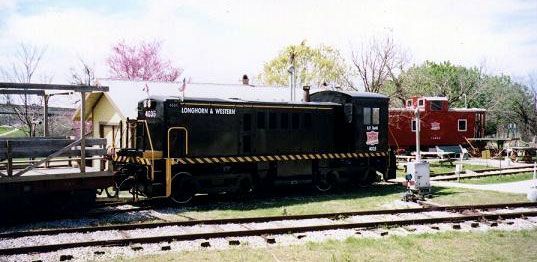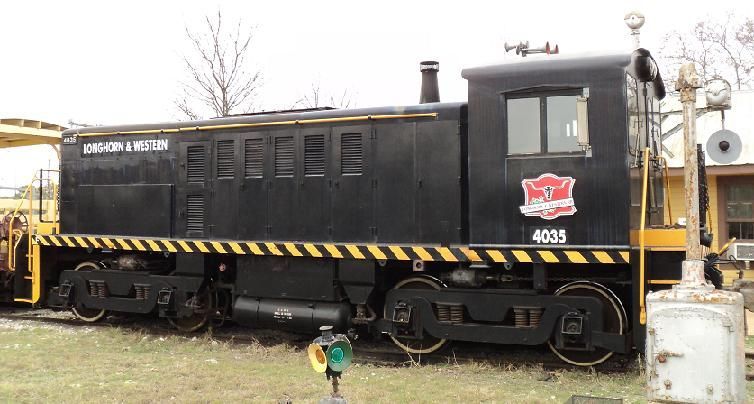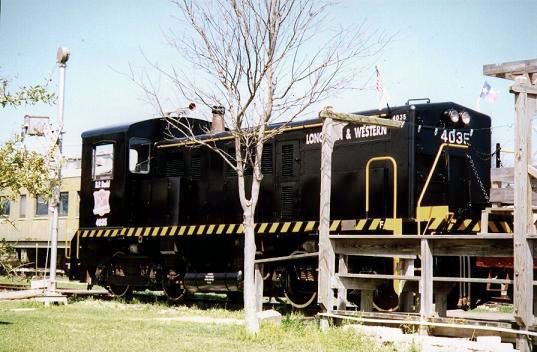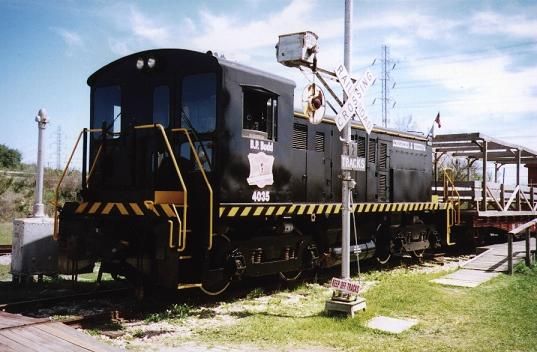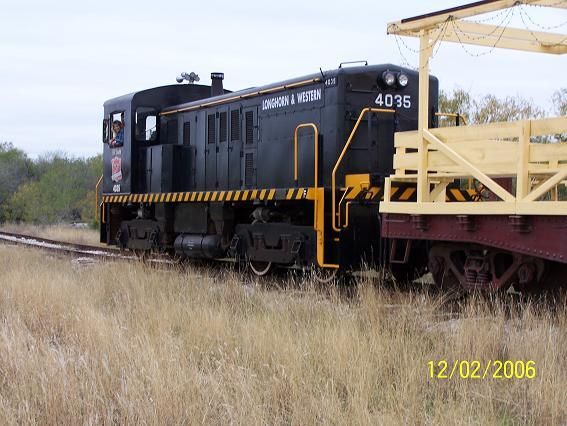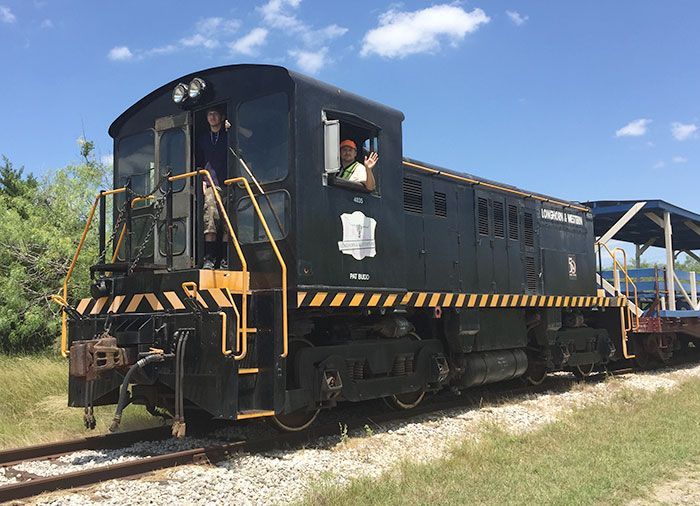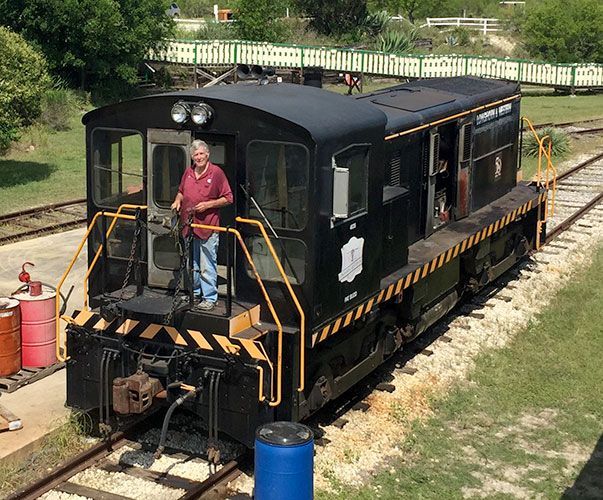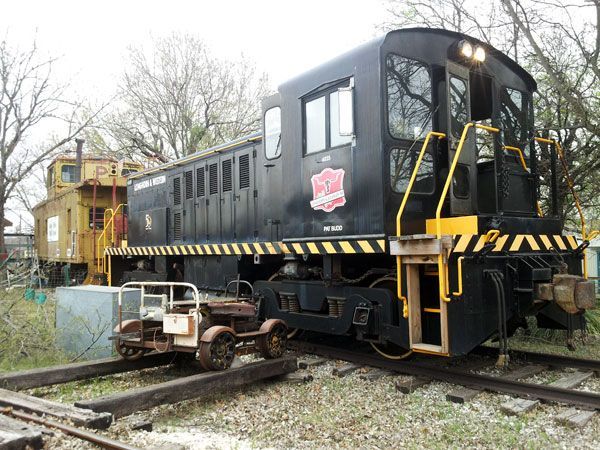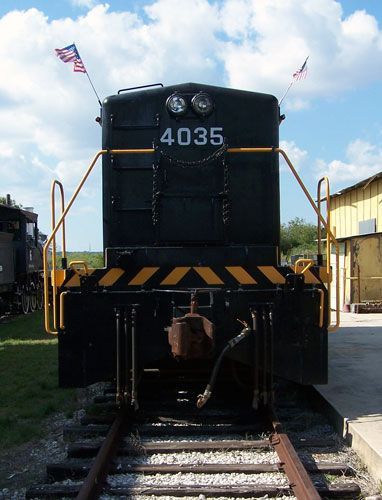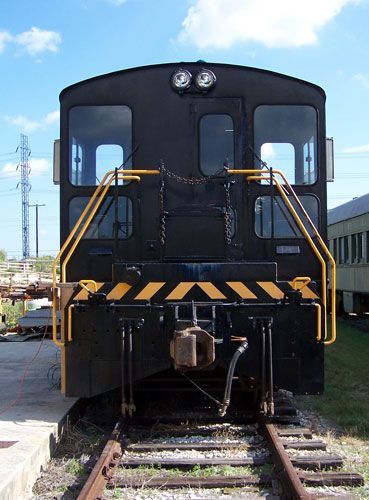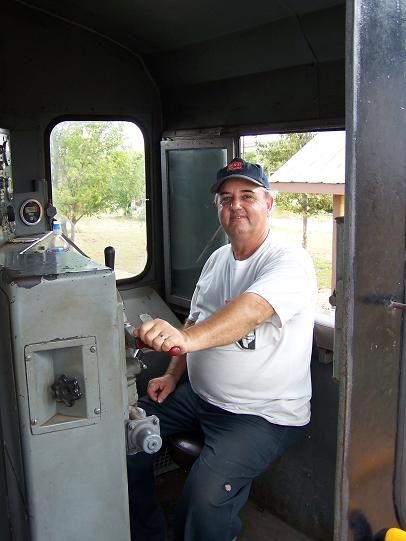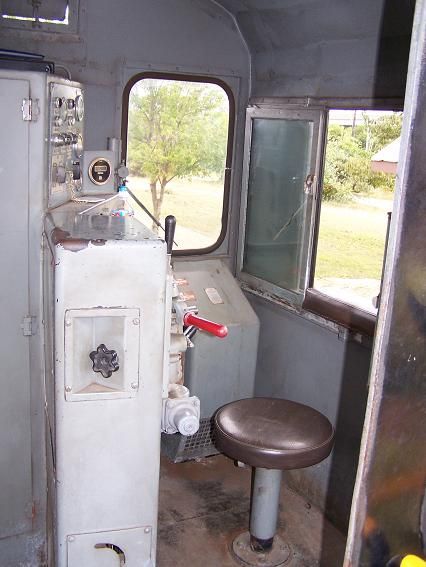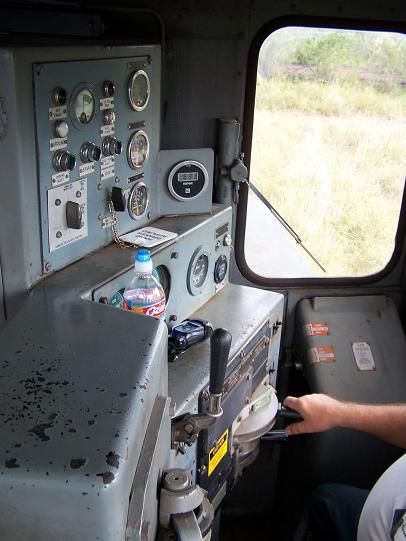1954 Baldwin 0-4-4-0 Diesel-Electric Switcher
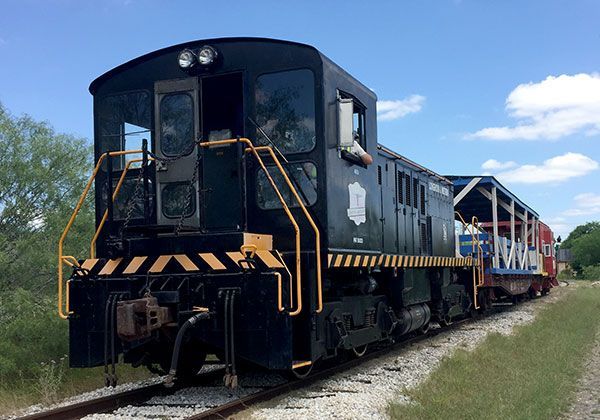
Technical Specifications
Year:
1954
Builder:
Model:
RS-4-TC
Production:
July 1953 - January 1955
B-B
4'-8 1/2" (1,435 mm)
Length:
38'-11" (11.86 mm)
Height:
12'-6 1/2" (3.823 mm)
Weight:
60 Short Tons (54 t)
Caterpillar D397
Engine Type:
Four-Stroke Diesel
V-12
Cylinder Size:
5 3/4" x 8"
(150 x 200 mm)
Transmission:
DC Generator
DC Traction Motors
Power Output:
400 HP (300 kW)
Locomotive Brakes:
Straight Air
Train Brakes:
Air
Purchased
From military surplus in 1995
The 4035 is the work horse of the Longhorn & Western Railroad at the Texas Transportation Museum. Following its purcahse from military surplus in 1995, it has carried around 250,000 passengers, quite a change from its days hauling fuel, munitions and other supplies for the army. While it is not the most glamorous of locomotives, switchers like these perform a vital role for railroads every day, helping to build those mile and a half long trains to be seen on the Union Pacific's mainline just across the road from the museum. We have maintained its original army paint scheme. In honor of one of the museum's hardest working volunteers, a retired Southern Pacific engineers, we named it the B.P. Budd, for Pat Budd, who contributed so much to the development of the Longhorn & Western RR.
Pages from the army manual regarding this class of locomotive.
The 4035 is a 61 ton 0-4-4-0 locomotive, a RS-4-TC 1A, built by the Baldwin Locomotive Company in August of 1954. RS-4-TC stands for Road Switcher - 4th design - Transport Command. It has a 500 HP, 8 cylinder Caterpillar diesel, with a bore of 6.7 inches and a stroke of 7.5 inches, supplying electricity to four traction motors, one per axle. It was rebuilt and upgraded to have an EMD control standards, and its engine was de-tuned to match the generators. Its original wheel trucks, which could be widened or narrowed to fit other rail gauges, were also replaced.
Some 74 of these locomotives were built during the Korean War. They were some of the last ever constructed by the historic Baldwin Locomotive Works, which began building steam locomotives in 1825. 44 of these 61 ton switchers were designed for foreign use and had special axles which allowed the wheels to be easily widened from the standard American gauge of 4 feet 8 1/2 inches to five feet, which just so happens to be what the Russians use. Those built for domestic use were numbered 1247-1276, those for foreign use were numbered 4001-4044. All were designed to be operated in areas with low clearances. "Foreign" units such as the 4035 are slightly longer than the domestic version at 39 feet 2.5 inches. Engine heaters were installed to allow for operation in temperatures as low as minus 40 degrees Fahrenheit. Maximum safe speed is 51 MPH, with a tractive effort of 15,650 pounds at 7 MPH. The wheels are 40 inches in diameter. It can hold 500 gallons of diesel fuel.
There is no evidence that #4035 ever served overseas. Its variable width axles were replaced when it was refitted with a newer engine control system and generator. The result is a locomotive that is bigger and more powerful than our older 45 Tonner but which is significantly easier to maintain. TTM acquired #4035 in July of 1995. While the cost of the locomotive itself was nominal, transporting it to the museum cost over $20,000. It only had to be moved a mile or so was by road but this was the most expensive element of it's delivery. The locomotive has been almost trouble free since it's arrival. It does require quite a lot of preventive maintenance but apart from that it has provided sterling service. Thanks to our own volunteers, we have been able to address several problems. Finding the right parts and people who have worked on these locomotives and Caterpillar engines is tricky but can be done.
Transportation Museum
CONTACT US TODAY
Phone:
210-490-3554 (Only on Weekends)
Email:
info@txtm.org
Physical Address
11731 Wetmore Rd.
San Antonio TX 78247
Please Contact Us for Our Mailing Address
All Rights Reserved | Texas Transportation Museum
